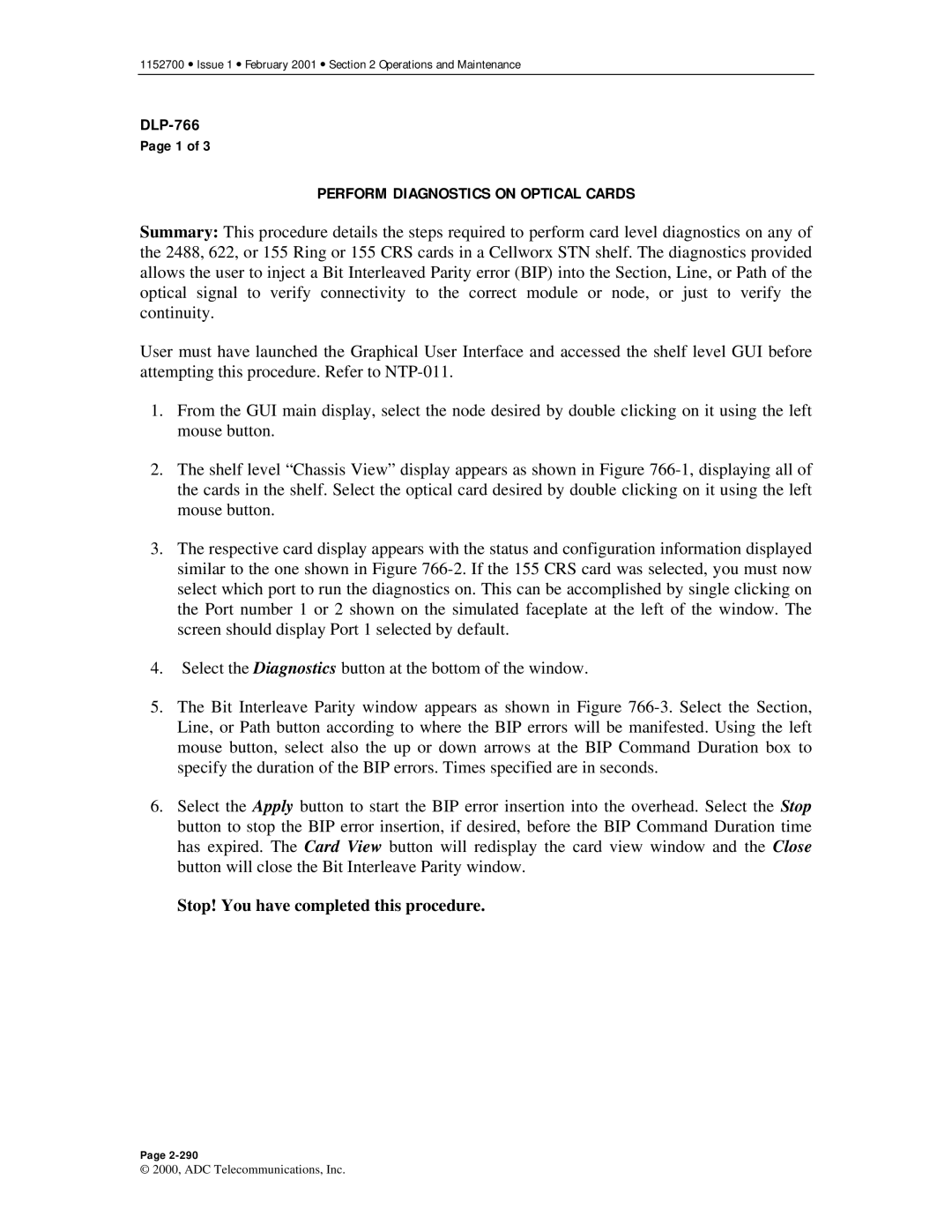1152700 • Issue 1 • February 2001 • Section 2 Operations and Maintenance
Page 1 of 3
PERFORM DIAGNOSTICS ON OPTICAL CARDS
Summary: This procedure details the steps required to perform card level diagnostics on any of the 2488, 622, or 155 Ring or 155 CRS cards in a Cellworx STN shelf. The diagnostics provided allows the user to inject a Bit Interleaved Parity error (BIP) into the Section, Line, or Path of the optical signal to verify connectivity to the correct module or node, or just to verify the continuity.
User must have launched the Graphical User Interface and accessed the shelf level GUI before attempting this procedure. Refer to
1.From the GUI main display, select the node desired by double clicking on it using the left mouse button.
2.The shelf level “Chassis View” display appears as shown in Figure
3.The respective card display appears with the status and configuration information displayed similar to the one shown in Figure
4.Select the Diagnostics button at the bottom of the window.
5.The Bit Interleave Parity window appears as shown in Figure
6.Select the Apply button to start the BIP error insertion into the overhead. Select the Stop button to stop the BIP error insertion, if desired, before the BIP Command Duration time has expired. The Card View button will redisplay the card view window and the Close button will close the Bit Interleave Parity window.
Stop! You have completed this procedure.
Page
© 2000, ADC Telecommunications, Inc.
